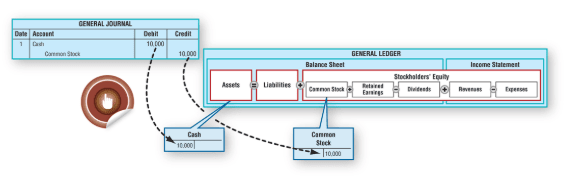
Net working capital, often abbreviated as NWC, is like a financial health report card for a business. It shows the difference between what a business owns (like cash, goods, and money others owe them) and what it owes to others. Paying balance sheet off long-term obligations requires planning to avoid compromising the funds for running the business.
- In 3-statement models and other financial models, you often project the Change in Working Capital based on a percentage of Revenue or the Change in Revenue.
- By measuring working capital and observing the change in working capital, a company can measure its liquidity and operational efficiency.
- As of March 2024, Microsoft (MSFT) reported $147 billion of total current assets, which included cash, cash equivalents, short-term investments, accounts receivable, inventory, and other current assets.
- You calculate working capital by subtracting current liabilities from current assets, providing insight into a company’s ability to meet its short-term obligations and fund ongoing operations.
- In the final part of our exercise, we’ll calculate how the company’s net working capital (NWC) impacted its free cash flow (FCF), which is determined by the change in NWC.
- If a company sells merchandise for $50,000 that was in inventory at a cost of $30,000, the company’s current assets will increase by $20,000.
Operating Assumptions
Thus, it’s appropriate to include it in with the other change in working capital formula obligations that must be met in the next 12 months. Additional financial calculations, such as the quick ratio and the fixed charge coverage ratio, can help a company with its short-term asset management. These are commonly used as part of the underwriting process and part of the standard small business loan requirements of lenders. Anything higher could indicate that a company isn’t making good use of its current assets. The company’s cash flow will increase not because of Working Capital, but because the company earns profits on the sale of these products.
Why is Net Working Capital Important for My Business?
Think of it as the money set aside to pay your monthly rent, salaries, and utility bills. With enough net working capital, a company might be able to keep its operations afloat and avoid running into financial trouble. It tells us if a business has enough money to handle its daily expenses and to invest in its future. Handling debt effectively is essential to maintaining a business’s financial condition. Businesses thus need to strategize how to pay off these debts without impacting daily operations.
- This calculation helps assess a company’s short-term liquidity and operational efficiency.
- By regularly monitoring this metric and implementing strategies to optimize your working capital position, you can improve your business’s financial health and operational performance.
- Earlier, I said it’s not a good idea to grab the numbers from the balance sheet to calculate this.
- Factoring with altLINE gets you the working capital you need to keep growing your business.
- Following a few key practices (particularly in regard to invoicing) will help you increase working capital to improve financial stability.
Net Working Capital: Understanding Its Impact on Business

Long-term loans that replace short-term liabilities can actually increase working capital by reducing current liabilities. However, short-term loans that accrue significant interest can decrease working capital. How do we record working capital in the financial statementse.g I borrowed 200,000.00 Short term long to pay salaries and other expenses. In this case, the retailer may draw on their revolver, tap other debt, or even be forced to liquidate assets. The risk is that when working capital is sufficiently mismanaged, seeking last-minute sources of liquidity may be costly, deleterious to the business, or, in the worst-case scenario, undoable. Hence, the company exhibits a negative working capital balance with a relatively limited need for short-term liquidity.

The inverse of having a negative working capital indicates that the company owes more than it has in its cash flow. For instance, suppose a company’s accounts receivables (A/R) balance has increased YoY, while its accounts payable (A/P) balance has increased under the same time span. If a company’s change in NWC has increased year-over-year (YoY), this implies that either its operating assets have grown and/or its operating liabilities have declined from the preceding period. What is a more telling indicator of a company’s short-term liquidity is an increasing or decreasing trend in their net WC. A company with a negative net WC that has continual improvement year over year could be viewed as a more stable business than one with a positive net WC and a downward trend year over year.
Is a Negative Change Always Good for Cash Flow?

This calculation helps identify whether your cash flow position is getting better or worse. Imagine if Exxon borrowed an additional $20 billion in long-term debt, boosting the current amount of $40.6 billion to $60.6 billion. The amount would be added to current assets without any debt added to current liabilities; since current liabilities are short-term, one year or less, and the $40.6 billion in debt is long-term. Working capital is constantly fluctuating, altering the delicate balance between current assets and current liabilities. That said, a dramatic change in working capital from one period to the next can signify equally dramatic consequences for your company.

Suppose we’re tasked with calculating the incremental net working capital (NWC) of a company, given the following historical data. We’ll now move to a modeling exercise, which you can access by filling out the form below. Conceptually, an investment in net working capital (NWC) is a core value driver that contributes toward shareholder value creation. There are a few different methods for calculating net working capital, depending on what an analyst wants to include or exclude from the value. By following these steps, you can accurately calculate your net working capital and then determine any changes over time. We’ll Car Dealership Accounting now move on to a modeling exercise, which you can access by filling out the form below.

